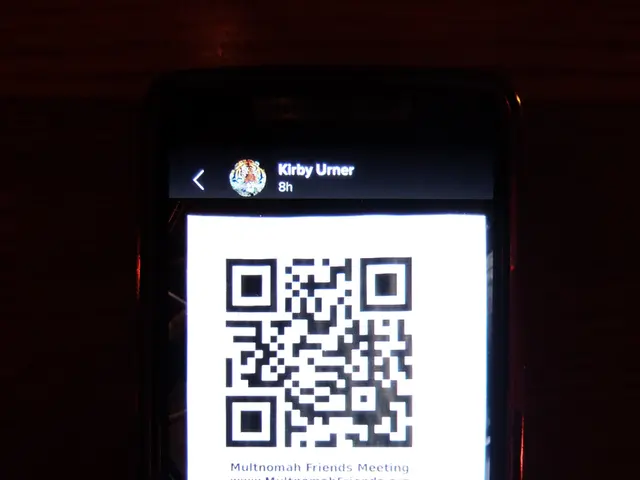Unmanned aerial delivery vehicles could potentially launch in the United States, explained here
In the rapidly evolving landscape of delivery services, drone delivery is making significant strides in the United States. This expansion is largely due to recent and proposed regulatory changes by the Federal Aviation Administration (FAA) that ease restrictions on beyond visual line of sight (BVLOS) drone operations, aiming to simplify regulatory approval and enable more extensive drone delivery across urban and suburban areas [1][3][5].
Leading this charge is Wing, a drone company owned by Google parent Alphabet. Currently operating from 18 Walmart stores in the Dallas area, Wing plans to expand drone deliveries to 100 Walmart stores across Atlanta, Charlotte, North Carolina; Houston; Orlando and Tampa, Florida, by summer 2026 [1][2][3]. With extensive operational experience, Wing has completed hundreds of thousands of deliveries, including international operations in Australia [4].
Amazon Prime Air is also making a comeback, resuming drone deliveries in Texas and Arizona in early 2025 after a brief pause. The e-commerce giant aims to scale up to 500 million drone package deliveries annually by 2030 [1][2][3][4]. Amazon has received FAA permission to operate autonomous drones that fly beyond a pilot's line of sight and has expanded its drone delivery program to suburban Phoenix, with plans to offer the service in Dallas, San Antonio, Texas, and Kansas City [1].
DoorDash has partnered with Wing to launch a drone delivery service at Charlotte's Arboretum Shopping Center, allowing delivery from local restaurants. This marks a new application of drone delivery beyond retail packages towards food delivery [2].
Zipline, known for longer-range, zero-emission drones capable of carrying up to 4 pounds over 120 miles, is planning to expand operations into over 10 U.S. states and serve tens of millions of people. Zipline focuses on logistics-heavy applications, including healthcare deliveries, and praised the FAA’s new proposed rules as enabling the "next generation of services" [1][4][5].
Technological advancements also support this growth, with drones now carrying multiple-pound payloads autonomously over miles, managed by single pilots overseeing multiple drones simultaneously, and equipped with sophisticated obstacle avoidance systems [1].
In the suburbs of Frisco, Texas, Janet Toth is a fan of drone delivery and orders it a few times a month. Her 9-year-old daughter Julep enjoys watching the drone deliveries. Local restaurant owner John Kim, who operates PurePoke, has seen no complaints from drone delivery customers [6].
However, not everyone is welcoming the drone deliveries. Some residents in College Station have expressed concern about drones violating privacy and noise [7].
Wing's drones can carry packages weighing up to 2.5 pounds and travel up to 12 miles round trip, while Zipline's drones can carry up to 4 pounds and fly 120 miles round trip [8]. The top items from the over 150,000 drone deliveries Walmart has completed since 2021 include ice cream, eggs, and Reese's Peanut Butter Cups [9].
Shakiba Enayati, an assistant professor of supply chain and analytics at the University of Missouri, St. Louis, researches ways that drones could speed the delivery of critical health supplies like donated organs and blood samples. However, she sees obstacles such as the current cost of drone delivery being around $13.50 per delivery versus $2 for a traditional vehicle, the need for well-trained employees to oversee them, and their difficulty in certain weather conditions [10].
As of mid-2025, drone delivery services in the United States are transitioning from limited pilot programs to broader commercial expansion, marking an exciting new chapter in the world of delivery services.
References:
- Drone Delivery Services Are Expanding Across the US
- DoorDash Tests Drone Delivery in Dallas
- Wing Expands Drone Delivery Service to 100 Walmart Stores
- Amazon Resumes Drone Deliveries in Texas and Arizona
- FAA Proposes Rule to Make it Easier for Companies to Fly Drones Outside of an Operator's Line of Sight
- AP Video Journalist Kendria LaFleur contributed from Frisco, Texas
- Some residents in College Station have expressed concern about drones violating privacy and noise
- Wing's drones can carry packages weighing up to 2.5 pounds and travel up to 12 miles round trip
- The top items from the over 150,000 drone deliveries Walmart has completed since 2021 include ice cream, eggs, and Reese's Peanut Butter Cups
- Shakiba Enayati, an assistant professor of supply chain and analytics at the University of Missouri, St. Louis, researches ways that drones could speed the delivery of critical health supplies like donated organs and blood samples
- The expansion of drone delivery services, facilitated by regulatory changes from the Federal Aviation Administration (FAA), has led companies such as Wing, Amazon Prime Air, and Zipline to broaden their operations in cities like Atlanta, Charlotte, Houston, Orlando, Tampa, suburban Phoenix, Dallas, San Antonio, and Kansas City.
- Seattle, a bustling city, might consider implementing drone delivery services, following the success of other urban areas when businesses like Amazon and DoorDash partner to make deliveries more efficient.
- The integration of technology has allowed for drones to carry heavier loads over greater distances, while being managed by a single pilot and equipped with advanced obstacle avoidance systems. Notably, Zipline's drones can carry up to 4 pounds and fly 120 miles round trip.
- Beyond food and retail packages, healthcare deliveries have also become a focus for companies like Zipline. Researchers like Shakiba Enayati are exploring ways in which drones can speed the delivery of critical supplies like donated organs and blood samples. However, challenges such as high delivery costs, the need for well-trained staff, and certain weather conditions remain obstacles in the sector's growth.
In the given text, the cities of Seattle and College Station, the e-commerce giant Amazon, the companies Wing, Amazon Prime Air, DoorDash, and Zipline, as well as the federal agency Federal Aviation Administration (FAA) have been mentioned. The sectors of real estate (through the mention of Walmart stores), business (through the discussion of drone delivery services as a business expansion), technology (mentioned multiple times through the discussion of drone technology), and healthcare (through the mentions of healthcare deliveries and critical health supplies) are also relevant. The Amazon company is also referenced through its 'Prime Air' service.



